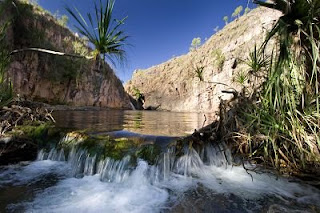 The main aim of documentary photography (which travel mostly is) is to come away with pictures where the people in them are acting naturally.
The main aim of documentary photography (which travel mostly is) is to come away with pictures where the people in them are acting naturally.So that when viewers look at your photos they can imagine themselves there and that the scene would look exactly the same.
Take this photo here, taken in the Akihabara electronics district of Tokyo. The shopkeeper is in deep conversation with the buyer and is paying no attention to the camera whatsoever. The scene would have looked exactly the same whether I had a camera or not.
There's a couple of ways of getting this effect. Firstly you could try to surreptitiously snap a shot off. Carry your camera down around your waist and get used to photographing that way. If you don't get caught you're sure to get some unguarded moments. The only problem with this style of shooting though is that all your pictures are taken from the same height, and you really don't have much control over the composition.
A much better way is to be bold and forthright about it all! Let people know that you're photographing them. Most street photography is done with a wide-angle lens so in order to fill the frame you really need to get up and close to people. If you have the camera up to your eye there's no mistaking your intentions.
A quick word of hello before you start and maybe a gesture to ask if photographing is OK will be appreciated but isn't always necessary. For this shot I just wandered up and started photographing. I'm pretty sure the people knew I was there (I'm not sure about the customer because he had his back to me) and at first the shopkeeper was a bit surprised but after a few minutes something interesting happened.
The longer you stay in one place and remain unobtrusive, all the while taking photos, the more people get bored with what you are doing. And it's when they get bored that they start ignoring you. And once they've started ignoring you that's when you'll get the great fly on the wall shots.
So the first couple of shots he's looking at the camera but after a couple of minutes he realises that making the sale is much more important than looking good for the camera. So back he goes to selling and then I can start the serious photography. You need to take those starter shots to warm people up. Most times you'll delete them afterwards but they're like the entree to the main meal. You can't get to the photographs you want to take without going through the preliminaries. Warming people up and hopefully boring them so much that they'll just ignore you!




